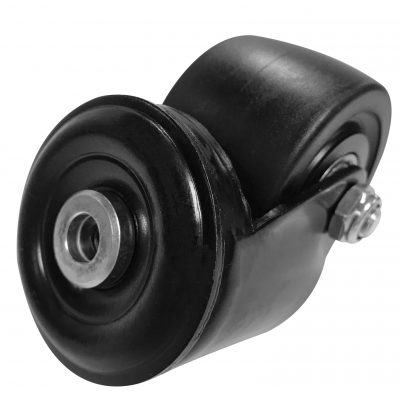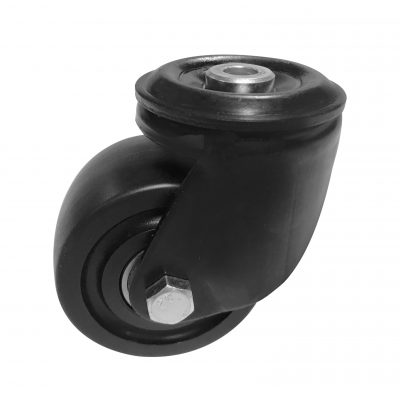Although casters look simple, the manufacturing process is not very simple. First, press the steel plate into the punched steel plate according to the size, and punch a round hole in the steel plate at the same time. Place the stamped paper on the stamping die and press the bracket and the brake plate to form it. Put the lubricant together in a circle of stamped bowls, and then put the steel balls. The number of steel balls is essential. Then install the rack on the bowl, and put the lubricant and steel balls on the bracket. After installing the steel ball, install the baffle and gasket. The cylinder in the bowl-shaped plate is broken by a hydraulic press, and the small bowl and the bracket are riveted together.
Put the rubber into the machine to melt, and press it into the rubber wheel through a mold. The burrs of the rubber wheel clamp must be smoothly polished.
Install the collar in the center hole of the rubber wheel, connect the rubber wheel to the bracket with a screw, install the nut, and finally test the caster, the caster is ready.
Did you know that the bicycle principle also uses universal wheels? If the rotation axis of the bicycle front fork extends to the ground, its intersection with the ground is always in front of the contact point between the front wheel and the ground. When you push the pad forward, the front wheels obey the front direction very obediently. If you push backwards, the relative positions of the front wheel and the fork are completely opposite, and the thrust direction of the side friction force is also opposite, and the front wheel shakes left and right. The relative position of the rotation axis of the front fork of the bicycle and the contact point between the front wheel and the ground are very important to ensure the stability of the bicycle. This is even more important than the effect of inertia when the wheel rotates.



















